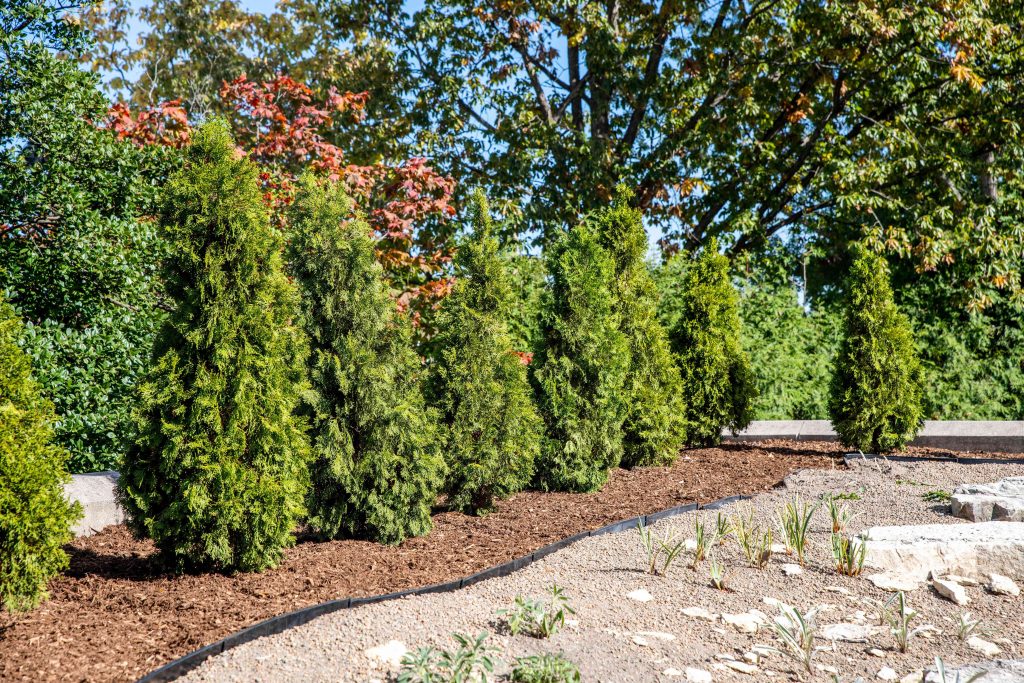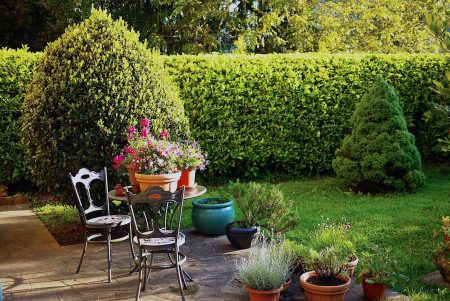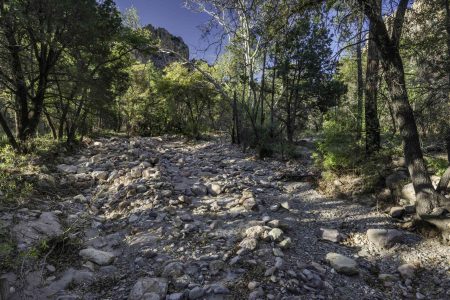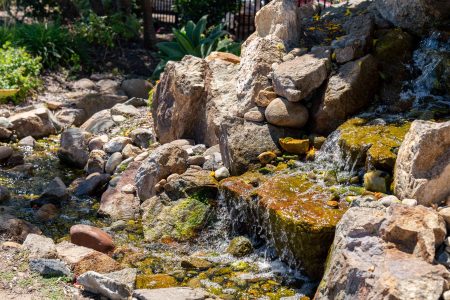Arborvitae is a popular evergreen plant for hedges and borders, especially the types that sport a trim, vertical shape. But gardeners usually approach plant selection with a wish list of plant characteristics. For example, in addition to wanting a plant of a particular color, you may want a plant that:
- Is low-maintenance or drought-tolerant
- Grows to a specific height and/or width
- Has a fast growth rate
In general, different arborvitae shrubs score pretty well on one or more of these criteria, but no type is exceptional on all three counts. If your heart is set on arborvitae for a specific application, you can likely find a plant that will suit your needs, but you may need to compromise, including the possibility of going over your budget for landscaping.
North Pole and Techny Arborvitae
Arborvitae is generally intolerant of drought, but North Pole arborvitae (Thuja occidentalis Art Boe) displays unexpectedly good drought-tolerance in the Northeast and other northern climates in the United States. It can reach 10 to 15 feet tall and 5 to 7 feet wide. Overall, its growth rate is average.
Techny (Thuja occidentalis Techny) is another arborvitae with a moderate growth rate that surprises with its drought tolerance. It reaches 10 to 15 feet tall and 6 to 10 feet wide.
Green Giant Arborvitae
Generally, arborvitae is not an exceptionally fast-growing shrub. Green Giant (T. plicata x T. standishii) is an exception, being one of the faster-growing arborvitaes, but its growth is much more than most home gardeners are looking for. Green Giant shrubs can climb to a towering height of 40 to 60 feet at maturity, and 12 to 18 feet wide. Furthermore, their growth can be as fast as 5 feet per year.
Green Giant is not the only biggie in this family. An even taller species, the Western Red Cedar (T. plicata), can quickly grow to 50 to 70 feet tall and 15 to 25 feet wide, earning it the common name “giant arborvitae.” Other cultivars that can rightly be called giants are the fast-growing Zebrina, which grows 30 to 50 feet tall and is 8 to 12 feet wide, and Hetz Wintergreen, a fast-growing variety that tops out at 30 feet tall and 10 feet wide.
Emerald Green Arborvitae
Arborvitae generally does not grow very fast (Green Giant and a few others notwithstanding) so if you’re hoping to grow a tall hedge or privacy screen as quickly as possible, you may have to compromise on cost. One option is to buy established Emerald Green arborvitae (Thuja occidentalis Smaragd) plants, which can reach 12 to 14 feet tall and 3 to 4 feet wide at maturity. But because they are already tall, you will be paying dearly for them.
Globe Arborvitae
Not everybody wants a tall, narrow kind of arborvitae and/or a plant with a fast growth rate. Some landscaping situations call for a plant that is more compact and with a growth rate that is slow to moderate. Luckily, there are types of arborvitae that can fit the bill. This is especially true of the various kinds of “globe arborvitae” (so named for their spherical shape or hassock shape), which include:
- Danica globe arborvitae (Thuja occidentalis Danica): 1 to 2 feet tall and 1 to 2 feet wide; becomes blue-green in winter.
- Woodward globe arborvitae (Thuja occidentalis Woodwardii): 4 to 10 feet tall, 8 to 15 feet wide.
Golden Arborvitae
Not all types of arborvitae are a plain, old green color, either. T. occidentalis Golden Globe bucks the trend, having a round shape and displaying foliage of a light golden color. It grows to be 2 to 4 feet tall by 2 to 4 feet wide. There is even a weeping kind, T. occidentalis Pendula. And there are other types of golden arborvitae:
- T. occidentalis Filip’s Magic Moment has yellowish-green foliage and reaches a maximum 8 feet tall and 3 feet wide. As a young plant, before it begins to sprout, it looks like a globe arborvitae.
- T. orientalis Aurea Nana (also called “Berckman’s golden arborvitae”) is less cold-hardy than most arborvitae (it is hardy only to planting zone 6, whereas many kinds are hardy to zone 2). Nana in a cultivar name indicates dwarf status; this shrub matures to be about 6 feet tall, with a slightly smaller width.
- T. occidentalis Rheingold is known for its rich, golden foliage. It also stays a modest size at 6 feet tall, with a slightly smaller width.
Read the full article here









